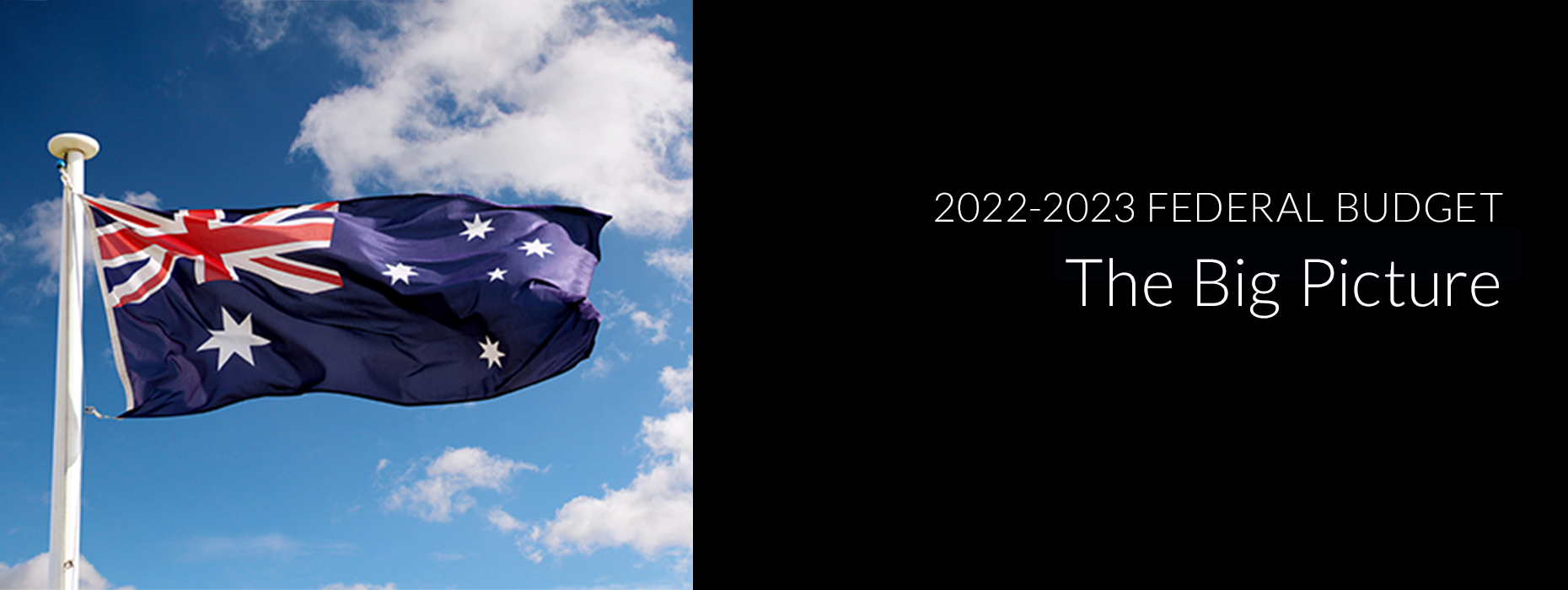When the latest Federal Budget 2022/23 was released on 25th October we were eager to see what the main commitments and the focus would be because this budget will highlight what the new Federal Government’s first term priorities are.
When reviewing the Federal Budget 2022/23 we could immediately identify, to no surprise, a focus to tackle the rising cost of living pressures. Highlighted in the budget were spending commitments allocated to families, health, aged care, housing, and the NDIS.
For anyone interested in the real estate markets, you would be pleasantly surprised with the Federal Government’s approach to new infrastructure spending and projects as well as the clarification on the new National Housing Accord. For real estate investors, the combination of the infrastructure commitments and new housing policies should see an indirect positive influence on local economies and suburban property markets.
Affordable living is a focus of the Government with $350 million committed federal funding for the construction on 10,000 affordable homes over the five-year period, with the State and Territory Governments doubling this commitment, with another 10,000 homes to be built in the same period. Along with this commitment the treasurer, Jim Chalmers, announced a national plan to build 1 million new “well-located” and energy-efficient homes in five years, starting 2024, as part of a historic agreement between Governments, investors, and the construction sector. This is referred to as the new National Housing Accord.
From a property buyer’s perspective, the federal budget displayed a very positive outlook for the property markets, with the Federal Government clarifying their priorities by listing incentives which aim to help older homeowners downsize, assist first home buyers in regional areas, and fund a shared equity scheme to enable low- and middle-income earners to purchase a home.
To summarise, the real estate markets will benefit from:
- A new Housing Accord with a target to build 1 million homes. This has been struck between Federal, State and Local governments, institutional investors, superannuation funds and the construction industry.
- A new $10b Housing Australia Future Fund
- Funding for the ‘Regional First Home Buyer Guarantee’
- $324 million allocated to the ‘Help to Buy’ shared equity scheme
- Additional incentives to provide assistance for older Australians to downsize
- An additional $8.1 billion in road and rail infrastructure spending
When diving further into the details of these schemes, it is clear that the Federal Government is aiming to not only assist First Home buyers to get into a home sooner, but also aiming to increase the supply of housing which will hopefully ease the affordability pressures.
‘Help to Buy’ shared equity scheme
The ‘Help to Buy’ shared equity scheme has developed to assist 10,000 home buyers each year with an equity contribution from the Federal Government of up to a maximum of 40% of the purchase price of a new home and up to a maximum of 30% of the purchase price for an existing home.

Down-sizers
Assistance for home owners to down-size has been granted by extending the exemption of home sale proceeds from pension asset testing from a 12-month period to 24 months. This will give pensioners more time to move into their next home before their pension could be affected. This is alongside the government expanding the access to downsizer superannuation contributions for people aged 55 to 59.
National Housing Infrastructure Facility
The latest budget also expands the remit of the $1 billion National Housing Infrastructure Facility. This will see an allocation of up to $575 million to unlock over 5,500 projected new dwellings, accelerate housing supply, and seek to attract more institutional capital.
Regional First Home Buyer Guarantee
Under the Regional First Home Buyer Guarantee, which began on 1st October 2022, 10,000 places are available each financial year to help eligible regional first home buyers purchase a new or existing home with a deposit of as little as 5 per cent. This measure will be funded by redirecting funds from the previously announced Regional Home Guarantee.
Defence Home Ownership Assistance Scheme
This policy allocates $46.2 million to assist current and former ADF members to purchase their own home.
Housing Australia Future Fund to target homelessness
With the housing affordability issues currently faced by many Australians, the Government outlined the main beneficiaries of the Housing Australia Future Fund.
The Government will invest $10 billion in the newly created Housing Australia Future Fund, to be managed by the Future Fund Management Agency. The aim is to generate returns to fund the delivery of 30,000 social and affordable homes over 5-years and allocate $330 million for acute housing needs. Initially the returns from the fund will:
- Repair, maintain and improve housing in remote indigenous communities.
- Provide crisis and transitional housing for women and children fleeing domestic and family violence.
Build more housing and fund specialist services for veterans who are experiencing homelessness.
National Housing and Homelessness Plan
$13.4 million has been allocated in the budget to develop a national strategy to address the challenges facing the housing and homelessness sector. The Plan will set out reforms needed to make it easier to buy or rent a home and assist homeless Australians.
Investment in infrastructure
The investment in infrastructure is vital to creating jobs and supporting businesses, as it ensures that our cities, suburbs and towns can operate effectively and efficiently. With the right investment in infrastructure, we can expect a reduction in transport commute times, increased productivity, employment opportunities, and migration to outer suburbs and regional areas.
We were excited to see in the budget an allocation of $8.1 billion over 10 years to new and existing road and rail infrastructure projects. Some of this money has been redirected to new priority areas and projects.

A summary of major road and rail infrastructure spending by state
NSW – $1.4 billion
- $500 million to start corridor acquisition and planning of the high-speed rail line between Sydney and Newcastle.
- $300 million for the Western Sydney Roads Package ($50 million for Castlereagh Connection, $37 million for Richmond Road and $75 million for the North-West Growth Corridor).
- $268.8 million for the New England Highway
VIC – $2.6 billion
- $2.2 billion for the Suburban Rail Loop in Melbourne.
- $150 million for Camerons Lane Interchange at Beveridge
- $125 million for Barwon Heads Road Upgrade – Stage 2
- $57 million for Ison Road Overpass
QLD – $2.1 billion
- $866.4 million to upgrade of the Bruce Highway
- $400.0 million for the Inland Freight Route upgrades
- $400.0 million for Beef Corridors
- $210.0 million for the Kuranda Range Road upgrade
WA – $634.8 million
- $400.0 million for the Alice Springs to Halls Creek Corridor upgrade
- $125.0 million for electric bus charging infrastructure in Perth
SA – $460 million
- $400.0 million for the South Australian component of the Freight Highway Upgrade Program
TAS – $78 million
- $48.0 million for the Tasmanian Roads Package
NT – $550 million
- $350.0 million to seal the Tanami Road and Central Arnhem Road
ACT – $85.9 million
- $85.9 million in funding for the Canberra Light Rail Stage 2A project
Other infrastructure spending
- $250 million for Phase 4 of the Local Roads and Community Infrastructure Program
- $60 million towards the upgrade of the runway at Hobart Airport
- $2.4 billion to NBN Co over 4-years from 2022–23 to upgrade the National Broadband Network to deliver fibre-ready access to a further 1.5 million premises by late 2025
- $1.9 billion investment for the development of the Middle Arm Sustainable Development Precinct in the Northern Territory.
DISCLAIMER – The information provided is for guidance and informational purposes only and does not replace independent business, legal and financial advice which we strongly recommend. Whilst the information is considered true and correct at the date of publication, changes in circumstances after the time of publication may impact the accuracy of the information provided. Aus Property Professionals will not accept responsibility or liability for any reliance on the blog information, including but not limited to, the accuracy, currency or completeness of any information or links.
If you are looking for a buyer’s agent to assist you with purchasing a home or investment property in the Sydney, Brisbane and Newcastle regions, as well as SA, TAS, ACT, VIC, NSW & QLD please get in touch with Lloyd Edge and his team at Aus Property Professionals here or give us a call on 1800 146 837!

